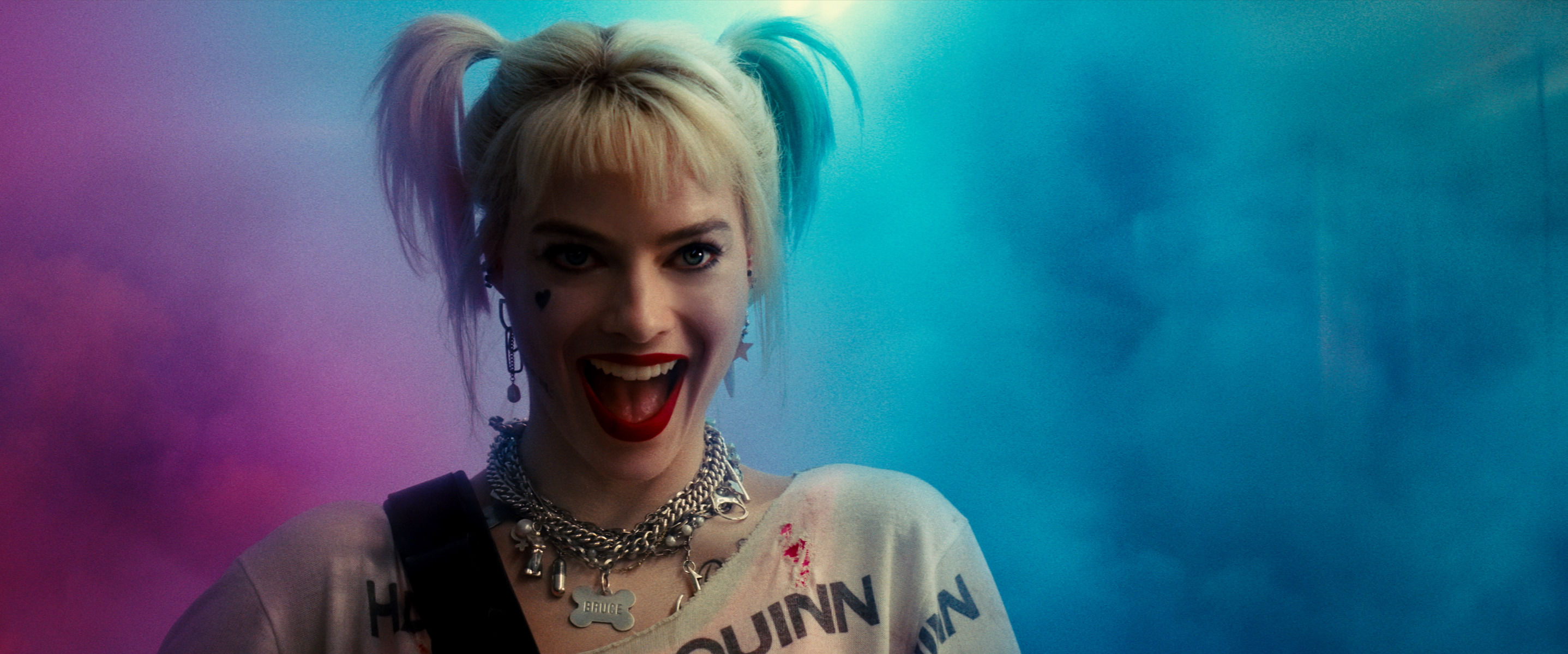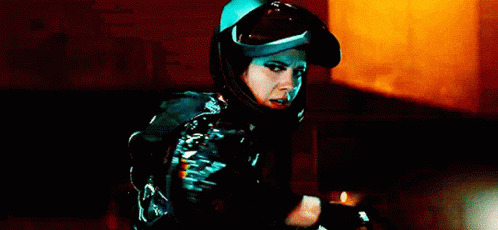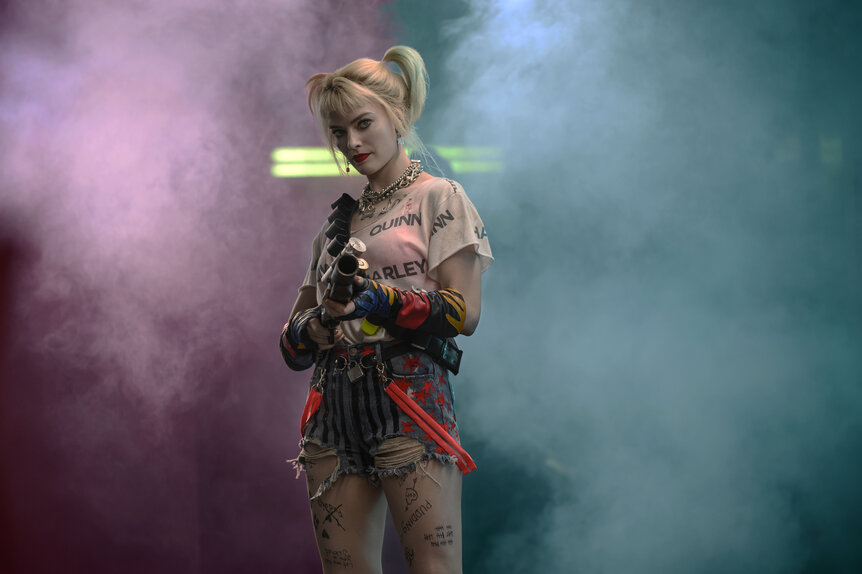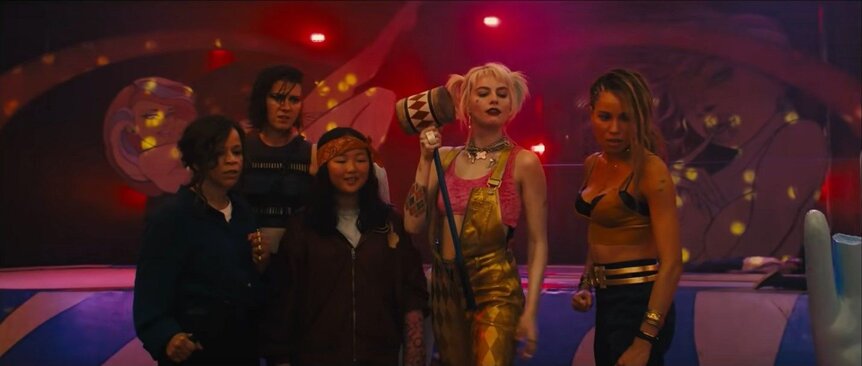Create a free profile to get unlimited access to exclusive videos, sweepstakes, and more!
Birds of Prey is pure bisexual disaster energy

Toward the climax of Birds of Prey and the Fantabulous Emancipation of One Harley Quinn, Harley tumbles to the ground, having been hit by a car. She had been so close to helping Cass, to saving her from Black Mask. The car carrying Cass and the one that hit her speed away and she tries to get up. As she looks up from the pavement, perhaps hoping for a miracle, the irresistible Huntress arrives on her motorcycle.
Now, imagine time slowing. (Even though it doesn't in the film, it does in my heart.) Harley looks up at Huntress with wide eyes filled with gratitude, surprise, joy, and a whole bucketload of attraction. Huntress flips up her visor and says, "Need a ride?" She throws a rope to Harley, who is wearing roller skates, and Harley, surprised and delighted yet again, is happy to take advantage of the offer. Huntress peels out and the two carry on, resulting in not only saving Cass but blowing Black Mask to bits.
Birds of Prey made a big (casually) queer splash when it premiered earlier this year. The film features three canonically queer characters and codes three more characters as queer. In the opening animated sequence, Harley's exes are shown onscreen — including one redhead who calls to mind a certain buxom botanist. At various points, Detective Renee Montoya works alongside her ex, District Attorney Ellen Yee. Huntress, with all her nervous energy and pointed glances, has been claimed by bisexual+ folks online (if you doubt me, just search bisexual and Huntress on Twitter). And Black Mask and Zsasz are pretty clearly lovers — creepy, messed-up, jerkwad lovers, but lovers nonetheless.
But what really makes this film so great and so specifically queer is that it harnesses bisexual disaster energy — for the better.
If you're not bisexual (I'm so sorry), you may not know what bisexual disaster energy means. Well, it's a bit layered and meta, but here's the simplest definition: Bisexual disaster energy is a term coined by bisexual+ folks to describe our experiences of being messy, fun queer people. From not being able to sit in chairs "properly" to the overuse of finger guns to unseasonably cuffed jeans, bisexual disaster energy is the spontaneity of someone who doesn't fit in a nice clean box. It's a self-effacing way of saying, "We don't have it all together, but we're still fun — and anyway, maybe we shouldn't have to."
Listen, it's silly, but it's also kind of important. Bisexual+ culture is a real, discrete culture. While not all bi+ people fit all of the pieces of bi culture, it's safe to say that we've got a corner on the market of being disastrous in the most lovable and intoxicating way.
And Birds of Prey takes bisexual disaster energy to the next level.
Let's start with our main fiend: Harley Quinn. In Birds of Prey, she is the epitome of a bisexual disaster: She's heartbroken, messy (literally and figuratively), frequently quite intoxicated, and unable to sit anywhere like a normal person. The two second confirmation of her bisexuality at the beginning of the film is just icing on the queer cake that is Harley Quinn. Add to that fact that she's constantly wearing blue, pink, and sometimes purple — the colors of the bi pride flag — and the bisexuality of it all just jumps out.
Let's move onto our favorite awkward weirdo: Huntress. She's also coded as a bi disaster, but more socially than physically. Physically, she's a death-dealing badass who constantly elicits awe from those around her. Every member of her crew sees her as the undeniable goddess slash rage monster she is. But Huntress? Huntress practices introducing herself in the mirror, stammers when she's complimented, and reacts to everything at a 10, even when a two will do. That's all pretty damn bisexual disaster energy if you ask me.
Plus, in the bi pride flag, the purple is the middle stripe. The pink symbolizes attraction to people of the same gender. The blue represents attraction to people of a different gender. The purple? The purple symbolizes the attraction to multiple genders. And what color does our fair Huntress wear at all times? PURPLE, BIATCH. I rest my (queer) case.
And can we talk about the bi lighting?! The combination of pink, blue, and purple is all over this film — from Harley's arrival at the police station where she f***s all the cops up with her fun gun to when she walks under the overpass with Cass on their way to the Booby Trap to the way the final credits show the film's title in pink, blue, and purple. The sheer bi-ness of it all is breathtaking.
The final element that just seals the deal of the epic bisexual disaster energy of Birds of Prey is the fight scene in the Booby Trap. Not only is the lighting bisexual AF, but also the Booby Trap is filled with sexist representations of women — stripped down to their body parts, sexualized, voyeurized, and divvied up for consumption. As our heroes beat the crap out of misogynists who are there to take care of a "couple of little girls," they literally tear down the sexist and patriarchal representations all around them. At the end of the scene, the setting that was a representation of what women should be is now a pile of broken symbols — and the women rise from the dust stronger than ever.
From the lighting to the characterization to the use of set pieces, Birds of Prey embraces bisexuality and disastrous women, wielding that raw power to create an action film for the rest of us. If using your chaotic energy to break down society's expectations of who you should be isn't disaster bisexual energy, I don't know what is.





























